Meet Us
The “Meet Us” page is designed to help you cross reference the staff/users/contributors of this site to the specific projects, pages or sites that they are involved in. A great many people that should be are not mentioned here but instead can be found by visiting the specific web site, page or project that they contribute to.
Staff
 Mike Full; Willamette Valley Pleistocene Project Director , Founder and site administrator, site administrator for the Yamhill River Pleistocene Project. A retired Police Officer, native Oregonian with a life long fascination with of fossils and prehistoric life. As a young boy back in the mid-60’s he picked up a fascinating rock and decided to keep it. On another day, his river adventures lead him to a large projectile point. Years later these treasures were identified as a mammoth tooth and a Cascade point. Since retiring, each summer finds him down on the river searching for fossils. One year he was rewarded by finding the fossil remains of a dis articulated mammoth weathering out of a cut bank of the river and he called in the experts. Forming the Yamhill River Pleistocene Project, we now have several in situ fossil locations and have identified the remains of mammoth, mastodon, giant sloth, extinct bison, ancient horse, giant camel, llama, deer, beaver and wolf; as well as a few projectile points, although the cultural component at any in situ location continues to elude us. The Willamette Valley Pleistocene Project represents our attempt to bring together other resources, providing an overall picture of our Pleistocene past for the general interest of the public.
Mike Full; Willamette Valley Pleistocene Project Director , Founder and site administrator, site administrator for the Yamhill River Pleistocene Project. A retired Police Officer, native Oregonian with a life long fascination with of fossils and prehistoric life. As a young boy back in the mid-60’s he picked up a fascinating rock and decided to keep it. On another day, his river adventures lead him to a large projectile point. Years later these treasures were identified as a mammoth tooth and a Cascade point. Since retiring, each summer finds him down on the river searching for fossils. One year he was rewarded by finding the fossil remains of a dis articulated mammoth weathering out of a cut bank of the river and he called in the experts. Forming the Yamhill River Pleistocene Project, we now have several in situ fossil locations and have identified the remains of mammoth, mastodon, giant sloth, extinct bison, ancient horse, giant camel, llama, deer, beaver and wolf; as well as a few projectile points, although the cultural component at any in situ location continues to elude us. The Willamette Valley Pleistocene Project represents our attempt to bring together other resources, providing an overall picture of our Pleistocene past for the general interest of the public.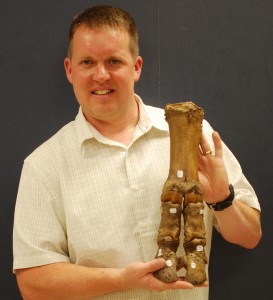 David Ellingson: Willamette Valley Pleistocene Project co-director and the Woodburn High School Pleistocene Site administrator. David Ellingson is a science teacher at the Woodburn High School, which sits atop Mill Creek: one of the richest Pleistocene mega fauna sites in the entire State. It has yielded mammoth, sloth, bison and horse remains as well as a huge assortment of micro fauna and floral remains over a period of two decades.
David Ellingson: Willamette Valley Pleistocene Project co-director and the Woodburn High School Pleistocene Site administrator. David Ellingson is a science teacher at the Woodburn High School, which sits atop Mill Creek: one of the richest Pleistocene mega fauna sites in the entire State. It has yielded mammoth, sloth, bison and horse remains as well as a huge assortment of micro fauna and floral remains over a period of two decades.David has been teaching biology at Woodburn High School since 1997 and has a deep love for American History, especially the Lewis and Clark Expedition and has been teaching a class that incorporates the history and science of Lewis and Clark. In recent years he has been leading an investigation into the Pleistocene past right on the Woodburn High School grounds. He and his students are excavating a nearly complete ancient bison from the grounds. The size, completeness of the skeleton as well as the excellent state of preservation make it one of the finest Pleistocene mega fauna beasts ever excavated in Oregon. The bison is on display at the Woodburn High School in David’s classroom.
 Dr. William Orr, PhD, professor emeritus and curator of the Thomas Condon collection of fossils at the State Museum of Fossils located at the University of Oregon, is our scientist in oversight. He and his wife Elizabeth have literally “written the books” on Oregon fossils and the geology of the northwest. Now semi-retired, he still teaches, lectures, consults and somehow finds more time for us than we deserve. Dr. Orr has spent countless hours of his own time teaching us the basics of vertebrate paleontology, taxonomy, methodology; training us in field work and identifying fossil specimens. He has brought by specimens from the Condon collection for comparison, coordinated with our on-scene scientist, and lent his experience and counsel in a huge number of factors that have kept our projects on track.
Dr. William Orr, PhD, professor emeritus and curator of the Thomas Condon collection of fossils at the State Museum of Fossils located at the University of Oregon, is our scientist in oversight. He and his wife Elizabeth have literally “written the books” on Oregon fossils and the geology of the northwest. Now semi-retired, he still teaches, lectures, consults and somehow finds more time for us than we deserve. Dr. Orr has spent countless hours of his own time teaching us the basics of vertebrate paleontology, taxonomy, methodology; training us in field work and identifying fossil specimens. He has brought by specimens from the Condon collection for comparison, coordinated with our on-scene scientist, and lent his experience and counsel in a huge number of factors that have kept our projects on track.
His current project is a late Pleistocene mega fauna dig site in Kings Valley that continues to yield exciting finds each summer. Visit the Condon Museum at the University of Oregon web site: darkwing.uoregon.edu
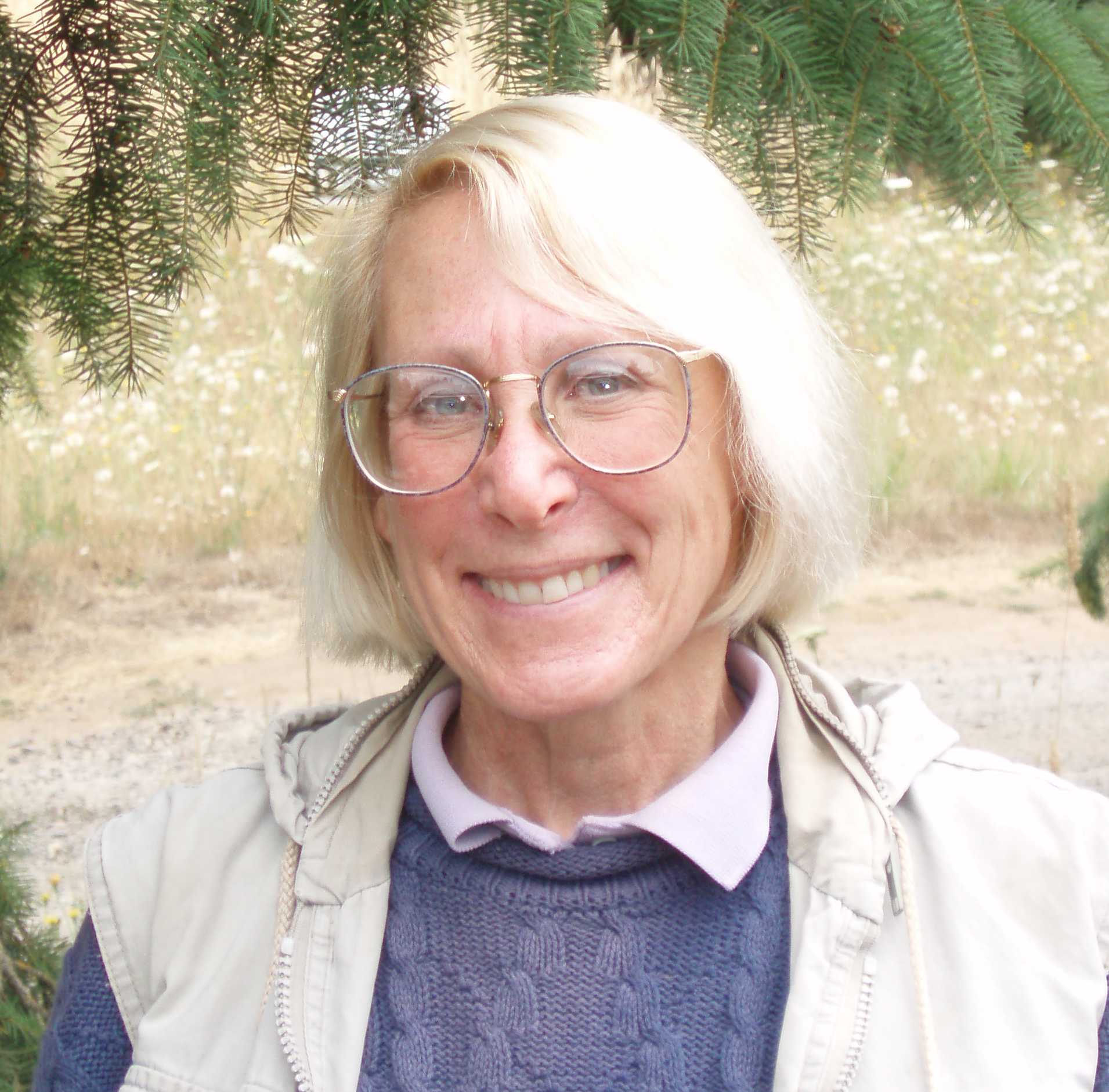 Dr. Alison T. Stenger, Ph. D. is the director of research for the Institute for Archaeological Studies and our on-sight scientist. She was the field director of the Woodburn Paleo Archaeological Project, where her team succeeded in identifying many species of extinct Ice Age fauna and extracting an ancient human hair from the late Pleistocene bog deposits. Her contacts at the La Brea Museum are a tremendous resource to us, positively identifying sloth, mammoth, mastodon, giant bison, extinct camel, ancient horse and bighorn sheep from our sites in 2007 and 2008. Additionally, she has shared her knowledge of projectile points with us, to aid in the identification of the few scattered surface finds we have documented. The Institute for Archaeological Studies is a non-profit, education and research organization, doing mostly State and Federal projects, but occasionally private contracts. The Institute does field work, lab work, and papers on its projects; they will stabilize and catalogue specimens, but they do not curate collections. Check out their website at: prehistorics.org.
Dr. Alison T. Stenger, Ph. D. is the director of research for the Institute for Archaeological Studies and our on-sight scientist. She was the field director of the Woodburn Paleo Archaeological Project, where her team succeeded in identifying many species of extinct Ice Age fauna and extracting an ancient human hair from the late Pleistocene bog deposits. Her contacts at the La Brea Museum are a tremendous resource to us, positively identifying sloth, mammoth, mastodon, giant bison, extinct camel, ancient horse and bighorn sheep from our sites in 2007 and 2008. Additionally, she has shared her knowledge of projectile points with us, to aid in the identification of the few scattered surface finds we have documented. The Institute for Archaeological Studies is a non-profit, education and research organization, doing mostly State and Federal projects, but occasionally private contracts. The Institute does field work, lab work, and papers on its projects; they will stabilize and catalogue specimens, but they do not curate collections. Check out their website at: prehistorics.org.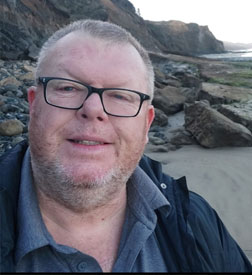 George Freitag, CEG, is our volunteer resident geologist with over 35 years of professional experience. His MS work involved stratigraphic analysis of fossiliferous Miocene marine rocks in California, and he has volunteered at The George C. Page Museum (La Brea Tar Pits) and at research vertebrate excavations near Fruita, Colorado. George looks forward to helping the WVPP team further understand the story behind the Quaternary stratigraphic sections and glacial erratics in the Willamette Valley.
George Freitag, CEG, is our volunteer resident geologist with over 35 years of professional experience. His MS work involved stratigraphic analysis of fossiliferous Miocene marine rocks in California, and he has volunteered at The George C. Page Museum (La Brea Tar Pits) and at research vertebrate excavations near Fruita, Colorado. George looks forward to helping the WVPP team further understand the story behind the Quaternary stratigraphic sections and glacial erratics in the Willamette Valley.
Joining our Project in 2022, George’s background in stratigraphics is something we have sought for many years. In addition to lending his expertise and knowledge in this field to our studies, he has kindly volunteered to take over the glacial and geologic erratic database, develop a boilerplate for data entry which will aid in locating and identifying grounding areas in the Willamette Valley for icebergs associated with the late Pleistocene Ice Age floods.
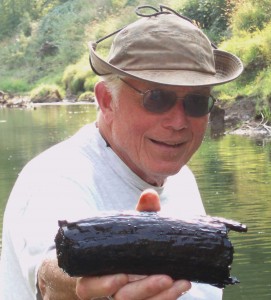 Dr. Lyle Hubbard, PhD I am a hybrid in training and in how I view this planet. Majored in Biology (ecology) with history and philosophy. Then earned a masters in Biological Oceanography and went to sea (Pacific and Bering) lots. Then changed course, took a masters in Biological Anthropology, adding more work in Geology. Finished up the formalizing of my educational experiences with a terminal degree in Biological Anthropology and paleoecology. Have worked in Alaska, the Northwest, Tennessee and Kriti. My work has been behind the podium and in the field in all of the above areas.
Dr. Lyle Hubbard, PhD I am a hybrid in training and in how I view this planet. Majored in Biology (ecology) with history and philosophy. Then earned a masters in Biological Oceanography and went to sea (Pacific and Bering) lots. Then changed course, took a masters in Biological Anthropology, adding more work in Geology. Finished up the formalizing of my educational experiences with a terminal degree in Biological Anthropology and paleoecology. Have worked in Alaska, the Northwest, Tennessee and Kriti. My work has been behind the podium and in the field in all of the above areas.
All I really want to do is collect bones, teach (pedagogically) and contemplate the historical threads of this ball of yarns.
(For health reasons, Dr. Hubbard has had to retire from our band. He has been a friend, colleague and mentor to us for many years, and his absence will leave a hole in our ranks and in our hearts.)
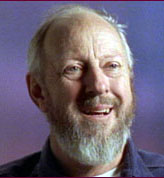 Dr. Robson Bonnichsen, PhD and the Center for the Study of the First Americans, Dr. Bonnichsen’s work and accomplishments were nationally and internationally recognized, yet he found the time to help the Yamhill River Pleistocene Project crew whenever we called; participating in a scouting float of the river, conducting the first exploratory dig at the McMinnville Site and producing two papers on the “McMinnville Mammoth”. His death in 2004 deprived us of more than a valuable resource; it took away a friend and he is sorely missed. The Center for the Study of the First Americans, with Dr. Mike Waters as its director, remains one of the foremost institutions studying paleo-archeology in America today and has carried on Dr. Bonnichsen’s tradition of assisting us whenever we have called upon them. Its mission is “exploring the questions surrounding the peopling of the Americas.” Visit the Center at their website: http://www.centerfirstamericans.com.
Dr. Robson Bonnichsen, PhD and the Center for the Study of the First Americans, Dr. Bonnichsen’s work and accomplishments were nationally and internationally recognized, yet he found the time to help the Yamhill River Pleistocene Project crew whenever we called; participating in a scouting float of the river, conducting the first exploratory dig at the McMinnville Site and producing two papers on the “McMinnville Mammoth”. His death in 2004 deprived us of more than a valuable resource; it took away a friend and he is sorely missed. The Center for the Study of the First Americans, with Dr. Mike Waters as its director, remains one of the foremost institutions studying paleo-archeology in America today and has carried on Dr. Bonnichsen’s tradition of assisting us whenever we have called upon them. Its mission is “exploring the questions surrounding the peopling of the Americas.” Visit the Center at their website: http://www.centerfirstamericans.com.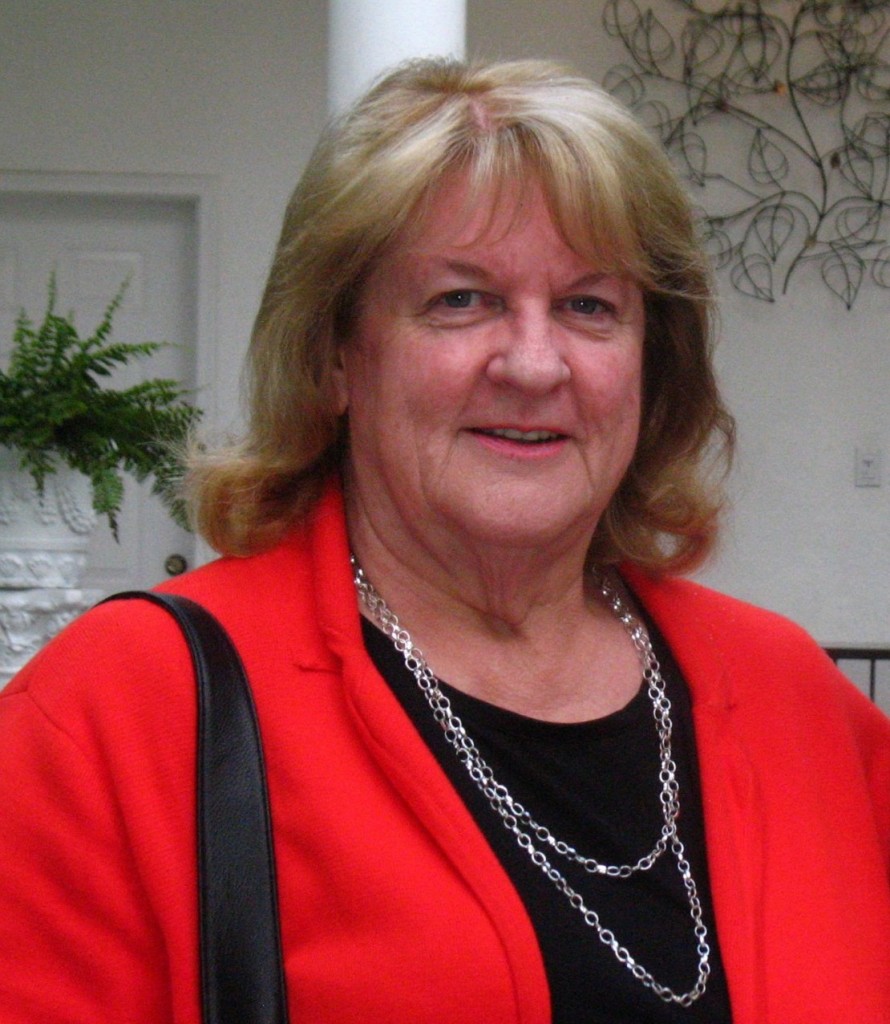 Yvonne Addington is a founding member of the Tualatin Ice Age Trails program and has had a lifelong fascination with the history and pre-history of the Willamette Valley. She is a former municipal judge, a retired City Manager for the city of Tualatin, a member of the Tualatin Historical Society and the leading expert on the history of the Tualatin Mastodon which is on display in the Tualatin City Library. She has been a driving force behind the Ice Age Trails program, active in several of its projects, including tracking down, securing and arranging transport for enormous glacial erratic boulders now on display at the Historical Society. Additionally, Yvonne has been a valued resource to the Willamette Valley Pleistocene Project, providing information and resources that has lead to several more investigations into our Pleistocene past, both within her home area of Tualatin and throughout the northern part of the Willamette Valley.
Yvonne Addington is a founding member of the Tualatin Ice Age Trails program and has had a lifelong fascination with the history and pre-history of the Willamette Valley. She is a former municipal judge, a retired City Manager for the city of Tualatin, a member of the Tualatin Historical Society and the leading expert on the history of the Tualatin Mastodon which is on display in the Tualatin City Library. She has been a driving force behind the Ice Age Trails program, active in several of its projects, including tracking down, securing and arranging transport for enormous glacial erratic boulders now on display at the Historical Society. Additionally, Yvonne has been a valued resource to the Willamette Valley Pleistocene Project, providing information and resources that has lead to several more investigations into our Pleistocene past, both within her home area of Tualatin and throughout the northern part of the Willamette Valley.
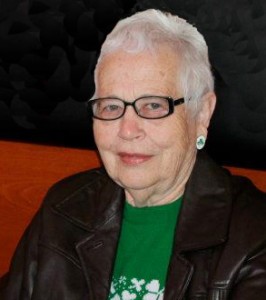 MarDee McDougal; The photographer for the Willamette Valley Pleistocene Project and the Yamhill River Pleistocene Project. I was born and raised in SW Idaho and graduated college in Portland with a BA in Speech and a Minor in Music. As a child I collected fossils that I’d find in Succor Creek Canyon. I have a Certificate from the New York Institute of Photography as a Professional Photographer and have taken several photography classes from both Portland Community College and Chemeketa Community College and am an active member of the Yamhill Valley Camera Club. My specialty is the “outdoors” – whether it be wildlife, landscapes, or even flowers in my own yard.
MarDee McDougal; The photographer for the Willamette Valley Pleistocene Project and the Yamhill River Pleistocene Project. I was born and raised in SW Idaho and graduated college in Portland with a BA in Speech and a Minor in Music. As a child I collected fossils that I’d find in Succor Creek Canyon. I have a Certificate from the New York Institute of Photography as a Professional Photographer and have taken several photography classes from both Portland Community College and Chemeketa Community College and am an active member of the Yamhill Valley Camera Club. My specialty is the “outdoors” – whether it be wildlife, landscapes, or even flowers in my own yard.Our Research Assistants
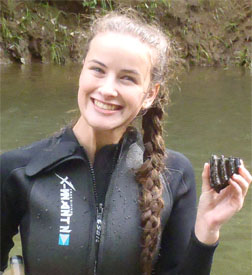
Hailey Blue; Willamette Valley Pleistocene Project Research Assistant. Hailey has been with our team ever since she was a young girl, spending time each summer floating the South Yamhill River in search of Ice Age Fossils and has participated in excavations at the Woodburn Site.
She assists in the stabilization, preservation and restoration of specimens, a tedious and time consuming process at the end of each fossil season; and in the photographing and entry of information into our on-line database.
Hailey has contributed to several educational programs, produced for educational institutions from pre-school through university level, and for Cities and public service groups. She was featured in the Tualatin Ice Age Trails promotional video and appears in many of our Project’s slide show programs.
Additionally, she has learned the art of fossil mold production, replica casting and finishing. She has assisted in the production of museum quality fossil replicas that have been produced and donated for educational purposes and public display. Her efforts can be seen in the Tualatin Municipal Library, Heritage Center and at Cabella’s.
 Zoey Fujii: Willamette Valley Pleistocene Project Research Assistant. Zoey found her first fossil, a piece of a Columbian mammoth cranium, when she was just six years old while visiting the McMinnville Mammoth excavation site with her family. She has been an asset for us ever since!
Zoey Fujii: Willamette Valley Pleistocene Project Research Assistant. Zoey found her first fossil, a piece of a Columbian mammoth cranium, when she was just six years old while visiting the McMinnville Mammoth excavation site with her family. She has been an asset for us ever since!
Zoey has assisted in the stabilization, preservation and restoration of specimens at the end of our fossil hunting seasons, and in the photographing and entry of information into our on-line database. (A tedious and time consuming part of the project that not many volunteers feel like tackling).
She has also contributed to several educational programs, produced for educational institutions from pre-school through university level, and for Cities and public service groups. Zoey appears in many of our Project’s field slide show programs.
Zoey has been our ongoing lab assistant in many projects and has learned the art of making fossil molds, creating casts, and dry-brush finishing to create a replica that is museum quality and indistinguishable from the original. She has assisted in the production of replicas that have been donated for educational purposes and public display. Her efforts can be seen in the Tualatin Municipal Library, The Heritage Center and Cabella’s.
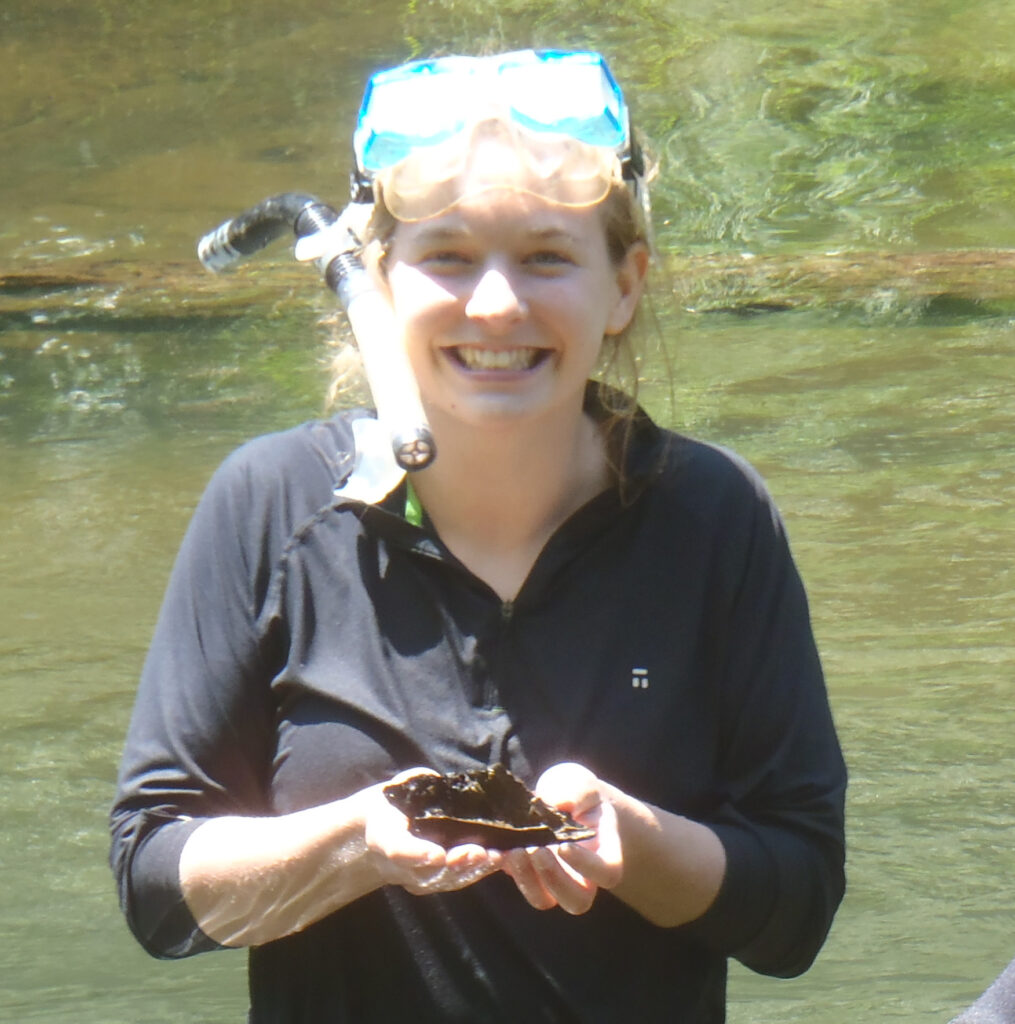 Sarah Schmidt: Willamette Valley Pleistocene Project Research Assistant. Sarah spent a summer with us while a student at Linfield University, researching late Pleistocene megafauna on the Yamhill River system. Field work included locating, initial data recording and field collecting of a wide range of megafauna species fossils.
Sarah Schmidt: Willamette Valley Pleistocene Project Research Assistant. Sarah spent a summer with us while a student at Linfield University, researching late Pleistocene megafauna on the Yamhill River system. Field work included locating, initial data recording and field collecting of a wide range of megafauna species fossils.
Lab work included the basics of fossil preservation and stabilization, data organization and database entry. She learned the process of producing fossil molds, casting replicas, and finishing the product to museum display quality.
Additionally, Sarah used our collected data coordinates of the fossils to create a map using Geographic Information System (GIS) software. This map was used in the field to locate potential fossil locals, categorize coordinates by fossil species and to visually represent where an organism may be weathering out of the bank. She used Excel spreadsheets to record species, location, anatomical part and taxonomy of fossils found. She then presented her research findings to Linfield University.
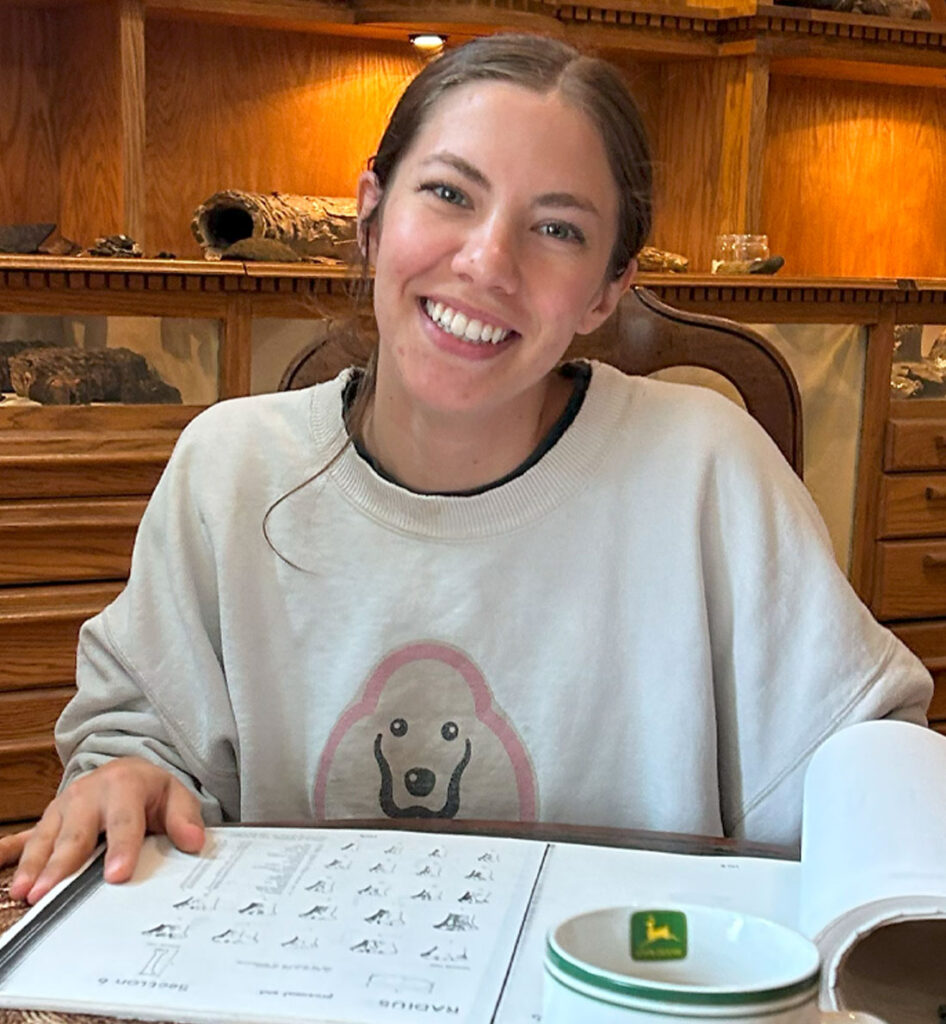 Lorena Johnson: Willamette Valley Pleistocene Project Research Assistant. Lorena is a is a recent environmental science graduate from OSU who has always had a passion for scientific discovery!
Lorena Johnson: Willamette Valley Pleistocene Project Research Assistant. Lorena is a is a recent environmental science graduate from OSU who has always had a passion for scientific discovery!
Lorena has participated in many floats, contributing to the discovery of fossil and artifact specimens. This field work includes the locating, on-site data recording, and collection of specimens. She has assisted in the stabilization, preservation, and restoration process of specimens at the end of the season, as well as the photographing and data entry into our on-line database. She has also learned the art of making fossil molds, creating casts, and dry-brush finishing to create scientifically accurate replicas.
Lorena has made contributions to educational initiatives, notably at the annual Fossil Fest hosted by the Hatfield Marine Science Center in Newport, OR. During this event, she effectively communicated details about specimens and provided foundational insights into the WVP project. Additionally, Lorena is actively working to streamline the project’s data, transitioning it from its current format into an interactive mapping database. This innovative approach aims to serve both project researchers and the public for educational purposes. “
Website courtesy of:
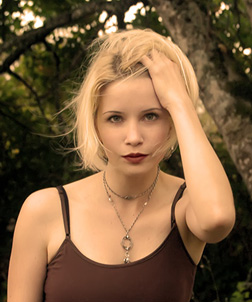
Joey Gill; Web site developer, administrator, trouble shooter and all around computer SuperGenius. (She also takes time out in the summer to hit the river with us in search of fossils, old bottles and fun.)
Joey initially developed the Yamhill River Pleistocene Project web page and then took on the challenge of the Willamette Valley Pleistocene Project. Her work paid off with a site that is hopeful extremely intuitive and user friendly that will be simple to navigate for both visitor and user. She will be the resource to all users and contributors in need of assistance with their page, troubleshooting, additions and/or enhancements for individual pages on this site.
Additionally, Joey is a great professional photographer and is available for freelance work in that area as well. If you like her product, need additional work done on your page or require some computer SuperGenius work done visit her web site at: www.joeygilldesign.com